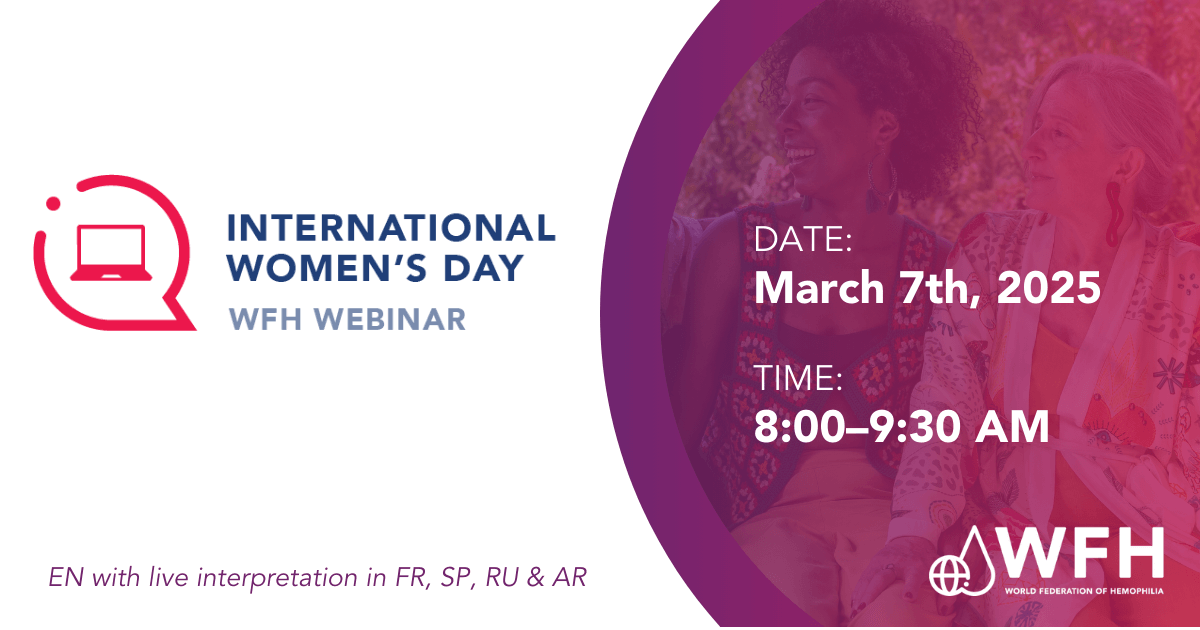
International Women’s Day Webinar | March 7, 2025
Listen to this 90-minute webinar presented on March 7, 2025, to learn about women and girls with bleeding disorders (WGBD).
Year: 2021
Language: German
Author(s): World Federation of Hemophilia
This document is also available in: English, French, Spanish
This is not an official WFH translation. This resource has been translated with permission, and is shared here with their kind permission. Translating organizations are encouraged to have translations reviewed by local experts, the WFH is not responsible for the translation or for any errors or changes to content from the original English edition. Patient organizations interested in translating a WFH resource must first obtain permission from the WFH, available here.
Many carriers of hemophilia also experience symptoms of the disorder. Some women live with their symptoms for years without being diagnosed or even suspecting they have a bleeding disorder. This fact sheet includes answers to questions such as:
And many more!
The WFH does not engage in the practice of medicine and under no circumstances recommends particular treatment for specific individuals. For diagnosis or consultation on a specific medical problem, the WFH recommends that you contact your physician or local treatment centre. Before administering any products, the WFH urges patients to check dosages with a physician or hemophilia centre staff, and to consult the pharmaceutical company’s printed instructions.
The WFH does not promote any particular pharmaceutical product and any mention of any commercial brand in this presentation is strictly for educational purposes.

Listen to this 90-minute webinar presented on March 7, 2025, to learn about women and girls with bleeding disorders (WGBD).
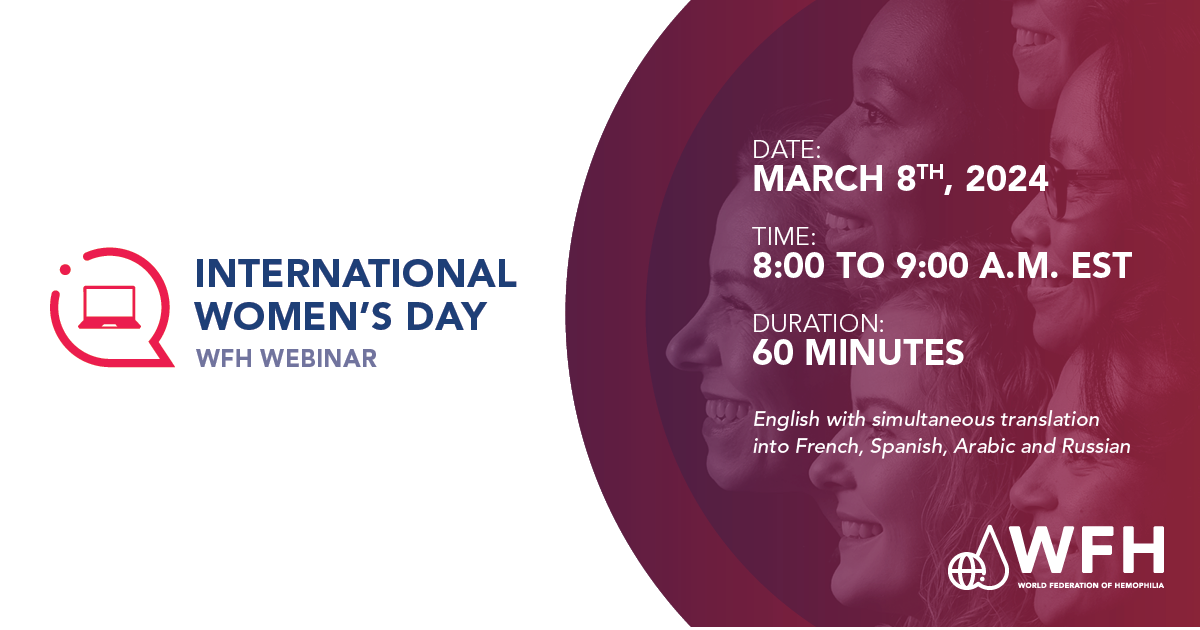
In celebration of International Women’s Day, the WFH hosted an educational webinar. The event centered around reproductive tract bleeding, pregnancy,
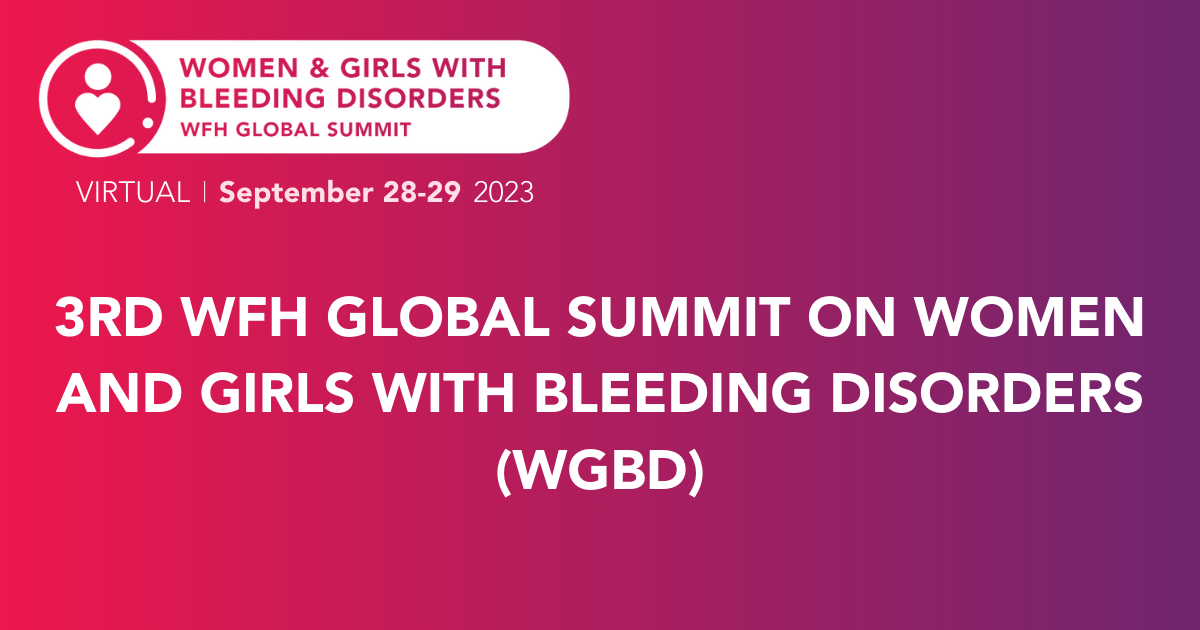
The chosen theme for this edition of the global summit centered on Equity and Access to Care for women and
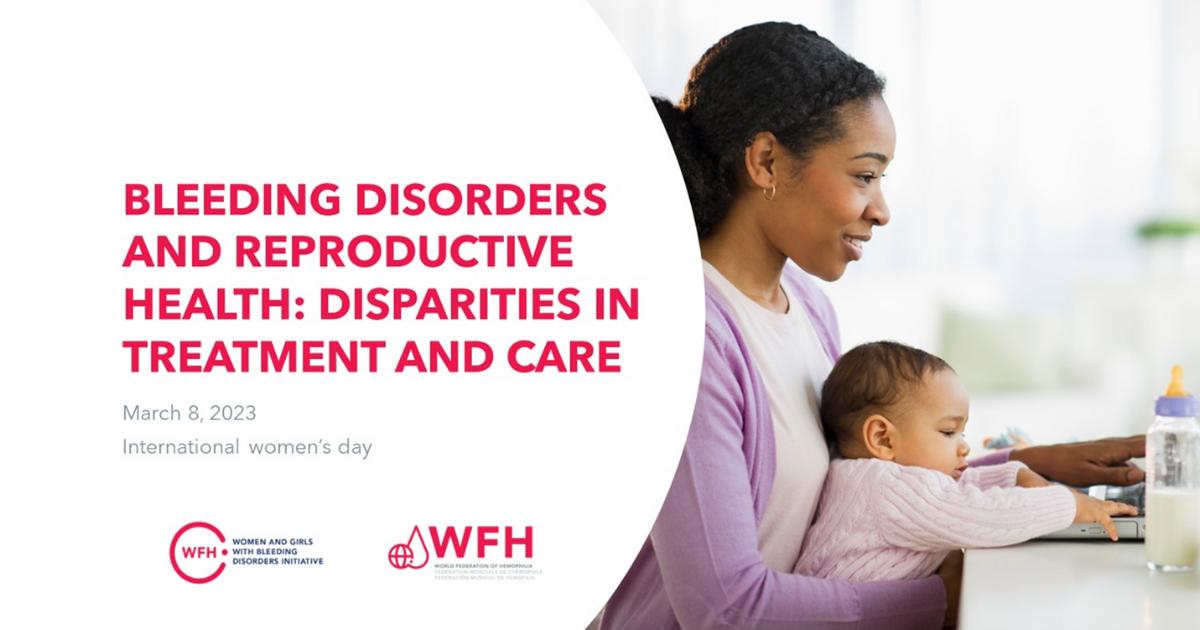
This 60-minute webinar explores the theme of “Women and Girls with Bleeding Disorders and Reproductive Health: Disparities in Treatment and

The previous edition is also available in: Japanese The previous edition of this resource has also been translated into the
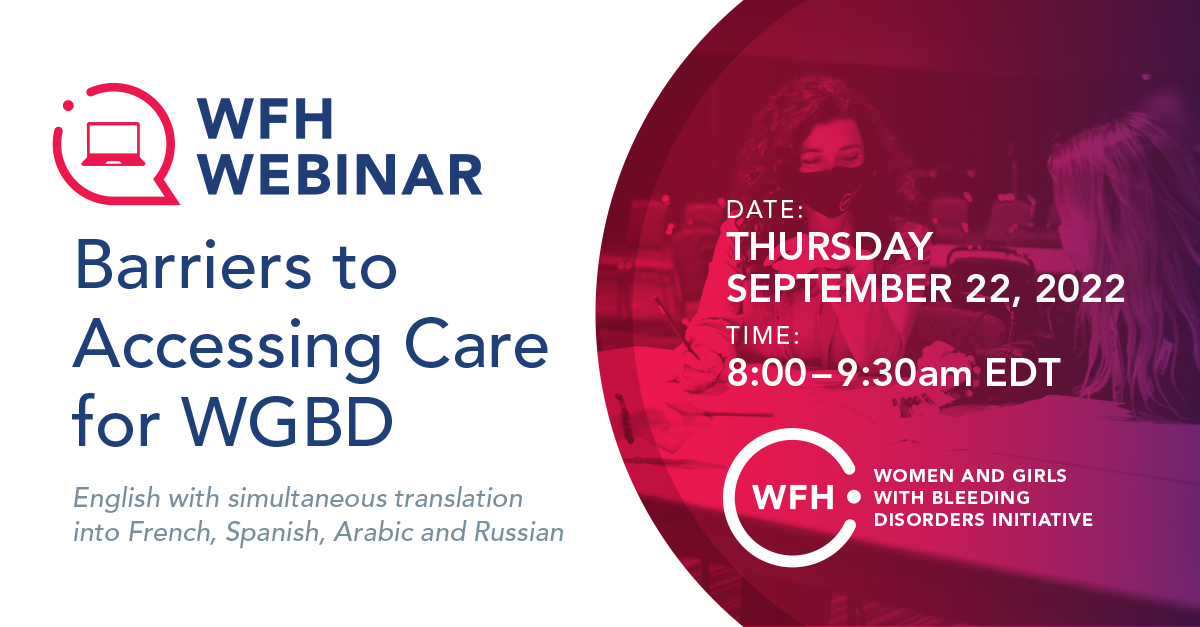
Listen to this 90-minute webinar presented on September 22, 2022, to learn about how to address challenges faced by Women